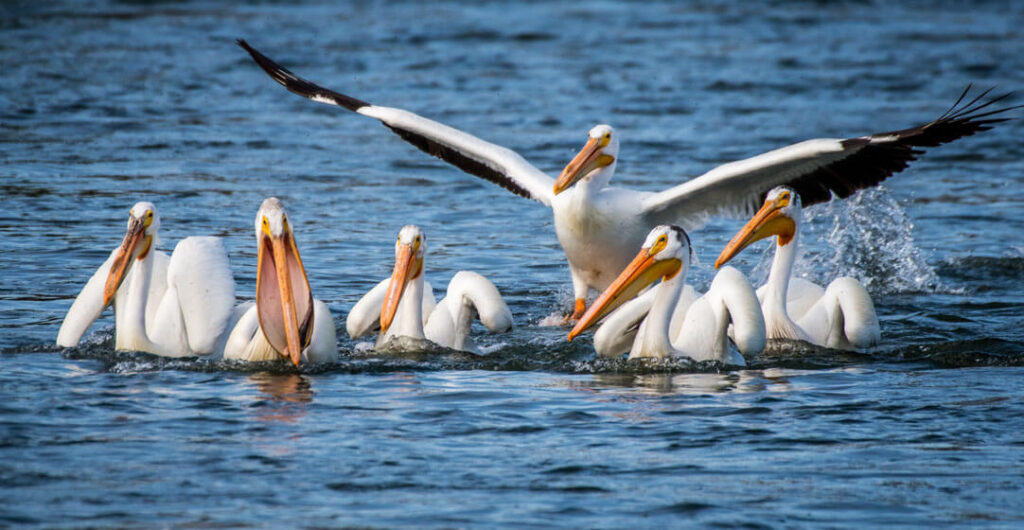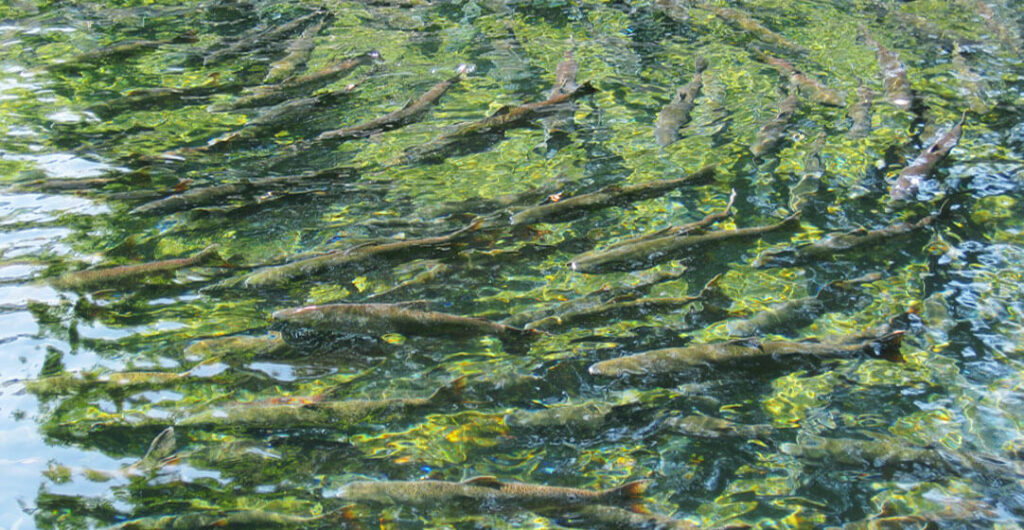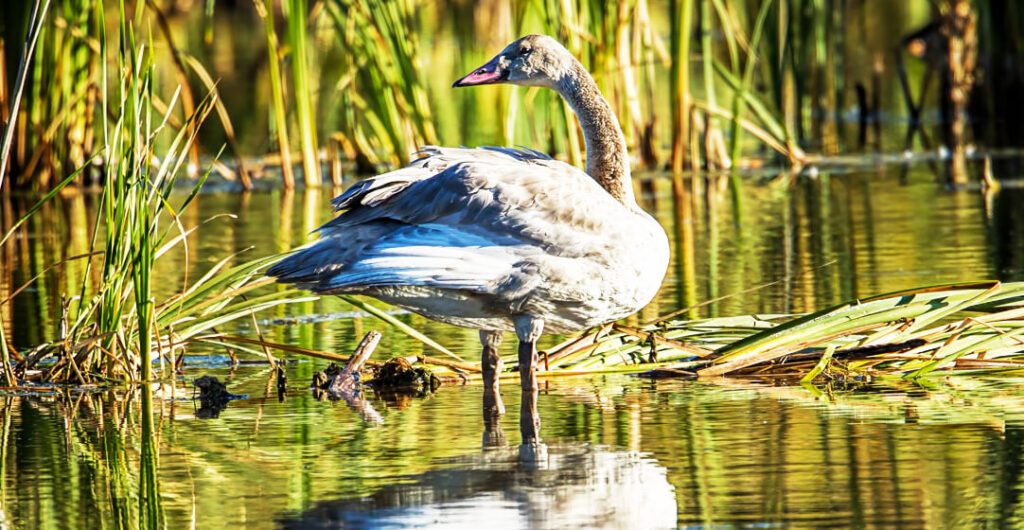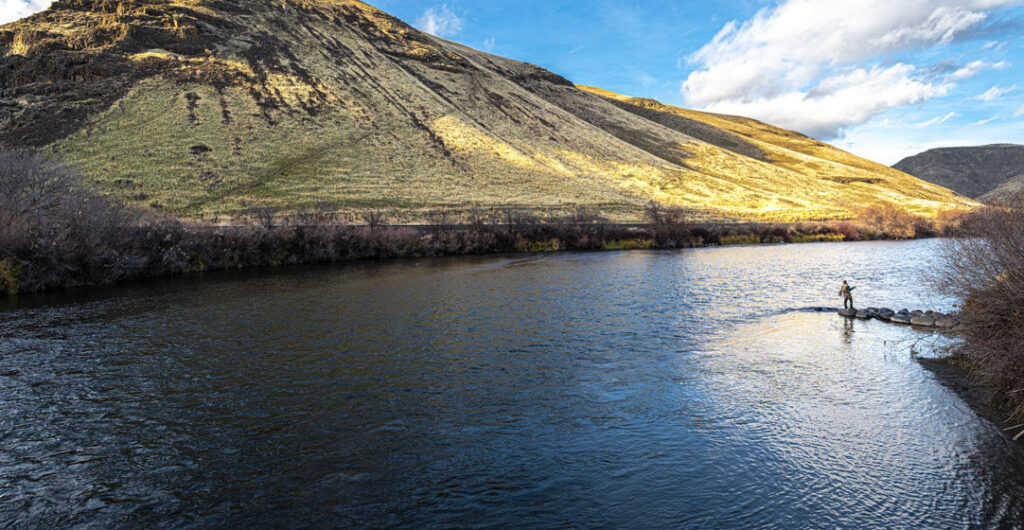Birding, boating, wildflowers and white water, discover Washington’s wild rivers
Every spring through early fall, Allen Bennett and four others navigate the waters of the Lower Columbia River in a four-oared rowing boat that resembles something out of Viking times. As Bennett and his cohorts descend the waterway in their St. Ayles Skiff, the looks they get from other boaters are priceless.
“People will just slow down and stare at us,” says Bennett of the Traditional Small Craft Association’s Lower Columbia River chapter. “The beauty of the boat really gets them.” Made with clinker plywood and using four sweep rowers, the 23-foot-long vessel named Doineann, which means storm or tempest in Scottish Gaelic, was built using plans from a Scottish naval architect, but it’s at home on this mighty river of the Pacific Northwest.

Washington itself is home to about 70,439 miles of river, which include larger rivers like the Columbia and tributaries such as the Yakima, Spokane and Snake. They’re some of the state’s most valuable resources: providing fresh drinking water and irrigation, as well as essential habitat for salmon, trout and other fish, waterfowl, beavers and bald eagles that nest in the nearby trees.
Rivers also offer an abundance of recreation, from canoeing along the Snohomish seeking out deer and river otters to rafting the Skykomish’s adrenaline-inducing Class IV rapids (or rowing them in a Viking-inspired vessel). Then there’s the fact that Native American tribes have relied on these waters for millennia.
Restoring Wild Rivers
To enjoy the state’s many wild rivers, we first have to ensure they survive.
Since 1998, the Washington Water Trust has been working to protect and restore healthy rivers and streams so that the fish and wildlife, as well as the farms and communities dependent on these waters, can once again thrive. These are waterways like the Dungeness River Watershed, tucked away in the northeast corner of Washington’s Olympic Peninsula and located within the land of the Jamestown S’Klallam Tribe, which has been fishing and living off its waters for millennia; as well as the nearby Elwha River.

In 2011 and 2014, the National Park Service removed two enormous dams that had been blocking the migration of salmon, freeing the Elwha to run wild once more and completely transforming the surrounding landscape. Chinook salmon began migrating back up the river and spawning, and once-trapped sediment recreated the Elwha’s banks, supporting estuary habitat for creatures like Dungeness crabs and surf smelts.
“When you let the river return to its natural cycle everything changes,” says Scott McKinney, floodplain management policy and grant manager for Washington Department of Ecology. “The results here have been quite dramatic. If you’re willing to get out there and take a little hike, you can see some pretty amazing stuff.”
For the last several years, McKinney had managed the policy for Floodplains by Design, a public-private partnership to reconnect Washington’s rivers to their historical floodplains, reducing flooding hazards and restoring habitat in the process.

Six Scenic and Wild Rivers
Congress created the National Wild and Scenic Rivers System in 1968 to preserve certain rivers for present and future generations to enjoy. Today there are more than 200 rivers across the U.S. and Puerto Rico with “Wild and Scenic” status. Washington has six of them: the Klickitat, Pratt, Skagit, Middle Fork Snoqualmie, White Salmon and Illabot Creek—part of the Skagit River watershed —all of which are located within two national forests, the Columbia River National Scenic Area and the Mount Baker-Snoqualmie National Forest.
To be eligible for “Wild and Scenic” designation, a river must meet two main criteria. First, the river (or a section of the river tributaries) needs to be free flowing in its natural state, meaning without dams or other impediments. Second, it has at least one remarkably outstanding value (ORV) that’s “rare, exemplary or unique,” according to the National Wild and Scenic Rivers website. This might be anything from geothermal hot springs to endangered salmon runs.

For example, Washington’s entire 9.5-mile Pratt River flows down from the Central Cascades’ Alpine Lakes Wilderness, supporting native trout runs and passing through old-growth forest brimming with wildlife, such as black bear and elk—two qualities that make it eligible. One of the many unique features along the Klickitat River’s 11-mile “wild and scenic” stretch is called the gorge.
“Basically, you’ve got this wide flowing river that enters a narrow constriction,” says Stan Hinatsu, recreation staff office for the U.S. Forest Service at Columbia River Gorge National Scenic Area. “At this point, the river essentially turns sideways.” Along with resulting in Class V rapids, this section has unique cultural significance as well.
Members of the Yakama Nation have practiced dip-net fishing here for generations, a system that uses nets to scoop out steelhead and salmon. While visitors shouldn’t interfere with their traditional rights, you can view them from afar on the county bridge overlooking the gorge.

River Recreation
From whitewater kayaking along the Cascade River in Skagit County or trekking to the remote Napeequa River, known for its solitude (steep walls and peaks surround its waters) and spectacular views, there are a myriad of ways to enjoy Washington’s flowing waters.
Here are just a few.
Birding and Fishing
The Klickitat is a hotspot for resident and migratory bald eagles, the latter of which come down from Canada and Alaska in winter. Located just outside of Lyle, the Balfour Klickitat Day Use Area and its three-quarters of a mile paved loop trail provides superb river canyon views, as well as a perfect perch for spotting bald eagles in the trees.
Another popular place for viewing bald eagles is the Skagit River. “A lot of people will come out of Seattle and boat down the river to where they’re concentrated,” says Dan Haas, U.S. Fish and Wildlife Service representative to the Interagency Wild & Scenic Rivers Council, “just to watch them feast on salmon.” The Skagit Bald Eagle Interpretive Center in Rockport leads guided eagle-viewing nature walks on weekends, and also offers tips on the best times and spots to look for them feeding along the water.
When it comes to waterfowl, Hass is especially partial to the Stehekin River, which flows down from the North Cascades. “It’s a spectacular watershed,” he says, “with a large swath of wilderness area, and the harlequin ducks here are great. In the spring, after the ducklings hatch and they’re ready to leave the nest, they just kind of bob down the water. It’s fun to watch.”

Tundra swans, recognizable by their white plumage, migrate down from the Arctic Circle and hang out in the wetlands on the Washington side of the Columbia River each winter. “There’s an overlook at the Franz Lake National Wildlife Refuge along Washington State Route 14 [between mile markers 31 and 32],” says Hass, “where you can see them hanging out and stop to watch them eat wapato,” a plant with nutritious starchy roots.
Anglers flock to the Klickitat River in July through September to fish along its riverbanks for steelhead trout, Chinook and coho salmon; while the Yakima is where fall fly fishers head for wild rainbow and Westslope cutthroat trout. Around North Puget Sound, the Snoqualmie and Stillaguamish (“Stilly”) rivers are ideal for catch-and-release fishing, with everything from cutthroat to steelhead depending on the time of year.
Hatcheries—like the Quinault National Fish Hatchery located beside Cook Creek, a tributary of the Quinault River, and the Carson National Fish Hatchery in Gifford Pinchot National Forest—are another great way to experience Washington’s river life, and learn about the fish production cycle firsthand.
A rule of thumb: Always obtain the proper fishing license and review the regulations for any river (or other area) where you plan to fish.

Hiking and Biking
Summer’s an ideal season for tubing and kayaking along the Klickitat River’s calm waters, as well as the Wenatchee River near Leavenworth. Hikers, bicyclists and even horseback riders take the multi-use Klickitat Trail, a 31-mile rail-to-trail that follows the river through forest Swale Canyon—bursting with stunning displays of wildflowers like purple lupine and yellow balsamroot in spring, and in strikingly vibrant hues of orange and yellow foliage each autumn. Note: The trail is typically closed in summer due to fire danger.
Kayakers with good technical skills navigate the frigid waters of the White Salmon in winter, sporting dry suits to tackle its Class III rapids, which are continuously fed by underground springs.
A Sacred Place
“Water creates nourishment in the form of food and hydration,” says Hinatsu, “so there are a lot of Native American archaeological sites along the river that are significant to the tribes of today.” For example, a Native American longhouse and cemetery sit right within the White Salmon river corridor. “This is especially significant,” Hinatsu says, “because it’s one of the earliest locations of the sacred Washat ceremonies, which are very important to the Yakama Nation.”
While Washington’s rivers are there for us to enjoy, it is important to take note of tourism’s impact on the river. “Whether it’s whitewater rafting, hiking or birding along the river, remember to be good stewards,” says Hinatsu. “For the environment, yes, but also for the Native American tribes that depend on these waters for subsistence.”
—Written by Laura Kiniry
—Top photo: Ralph A Haugerud/Rowland W Tabor

Road Trip Tips
Before you go: Get ready for your road trip with a AAA Membership. Get peace-of-mind on the road plus travel and insurance services and much more.
Save on hotels and rental cars: Unlock savings on hotels with a AAA membership. Plus, AAA members save up to 20% with Hertz.
Save on car insurance: AAA members save up to 8% on car insurance.
Get battery service: AAA Mobile Battery Service uses state-of-the-art technology to accurately diagnose battery-related problems. We’ll even replace your battery with a brand-new one if necessary, at a special member price.
Save with AAA member discounts: AAA membership gives you access to exclusive entertainment discounts nationwide.









